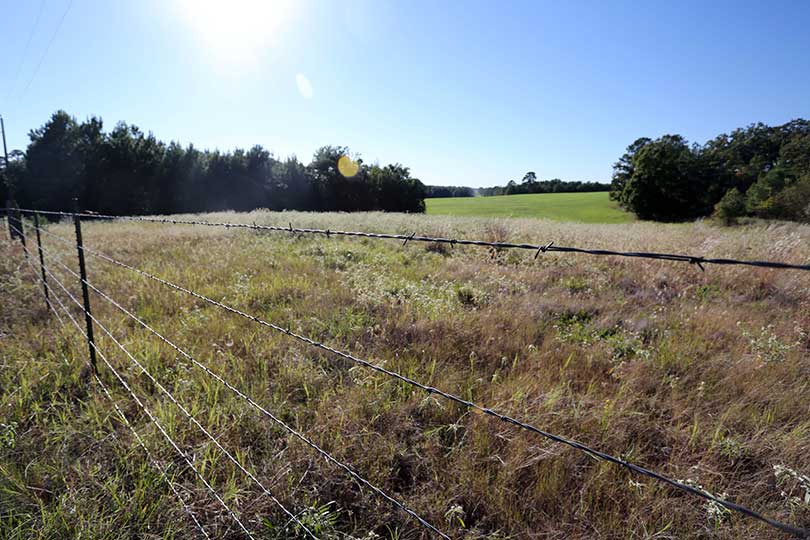Hundreds of miles of fence run through the Lone Star State, and questions surround those boundary strands.
Who’s liable if cattle get out and are hit on the road? Do neighbors have to split the cost of repairs for a shared boundary fence?
The Texas A&M AgriLife Extension Service set out to answer those questions in a new book, Five Strands: A Landowner’s Guide to Fence Law in Texas.
The book was written by Tiffany Dowell-Lashmet, Texas A&M AgriLife Extension Service agricultural law specialist in Amarillo, and Jim Bradbury and Kyle Weldon, both with James Bradbury law firm in Austin.
“All rural and agricultural law attorneys in Texas get a lot of questions from landowners related to fence law issues,” Dowell-Lashmet said. “Whether it be liability questions, like if a cow gets hit on the highway, or neighbor relations questions when it comes to maintaining a fence, this handbook aims to answer this type of real-world questions.”
The book gives landowners a background on how Texas fence laws originated, explains current laws landowners should know and details a few common fence dispute scenarios and solutions, she said.
Texas is still an open-range country, tracing back to cattle drives in the 1800s, and it can lead to some issues with motorists.
As the Lone Star State has grown, the laws have changed and so have county restrictions for open-range and fence laws between neighboring lands.
“An important goal in writing this book was to create a resource that is easily usable for landowners, so we really focused on toning down the legalese and writing it in practical terms,” Dowell-Lashmet said.
The book dives further into building and maintenance responsibility for various scenarios, including around oil and gas operations, which have become prominent in the Lone Star State.
In Texas, oil and gas companies are under no legal obligation to place a fence around their operation area to protect the surface from livestock, according to the fence law guidebook.
“I think it’s a pretty important chapter to take a look at,” Dowell-Lashmet said. “It’s not something that’s commonly known by folks who are dealing with oil and gas production around their livestock.”
The book was released in February. A copy of the handbook is available for download from http://agrilife.org/texasaglaw/.


I’m in Hale County, TX. There’s a commercial dairy that borders my property. The dairy’s cattle are constantly getting out and onto my land. The cows have damaged my buildings and my garden numerous times. They’ve tromped on my cash crops. The dairy employs somehow feel that they can drive anywhere on my property that they feel like. I’ve had my fill so I called the Sheriff to explain to the dairyman that no matter if his cows are on my place, they are considered to be impounded by me and they cannot come onto my property to collect them. That’s the extent I’ve had to go to in order to keep an incompetent neighbor off of my land. It’s sad. Some people just seem to think they can do whatever they want, when they want. These people don’t even understand that when you notify them that their cattle are out they are expected to stop whatever they’re doing and get the cows home. They seem to think their milking schedule somehow is involved but it’s not. Their harvest stops immediately upon notification. But now, I’ve even had to revoke their ability to collect their animals due to their own negligence and incompetency. It’s a shame and everyone in our community is aware of the behavior of these dairy owners. Fences don’t necessarily make good neighbors. Good neighbors make good neighbors!
I believe that you can only tolerate so much neighborly negligence.
In urban areas….a nice fence does in fact make a good neighbor. Alternatively, in rural areas where folks depend on one another for a variety of reasons, it is “Good neighbors that make (other) Good neighbors”. I would hope that my neighbor would at least call the Volunteer Fire Department if my place were on fire. I’ve been fortunate for the most part in having good neighbors that look out for one another; keep an eye on your place if your gone visiting relatives; look after livestock as needed; and knowing when to be nosey.
Your neighbor needs to know where your personal boundaries are, and make things right as needed.
Funny! As i read this article Im sitting at my neighbors waiting for someone to wake up so I can get oermisdion to retrieve my BULL from their pastur!
What some people don’t understand is that there are 2 purposes to a boundary fence. One is to keep your animals in and the other is to keep your neighbors animals out. Another important fact about a boundary fence is that the maintenance of the fence should be shared by the 2 land owners. So if your neighbors cows are getting onto your property and causing a problem then it is just as much your responsibility, if not more, to repair the fence. Better yet, get with your neighbor to plan a day a “fence mending”.